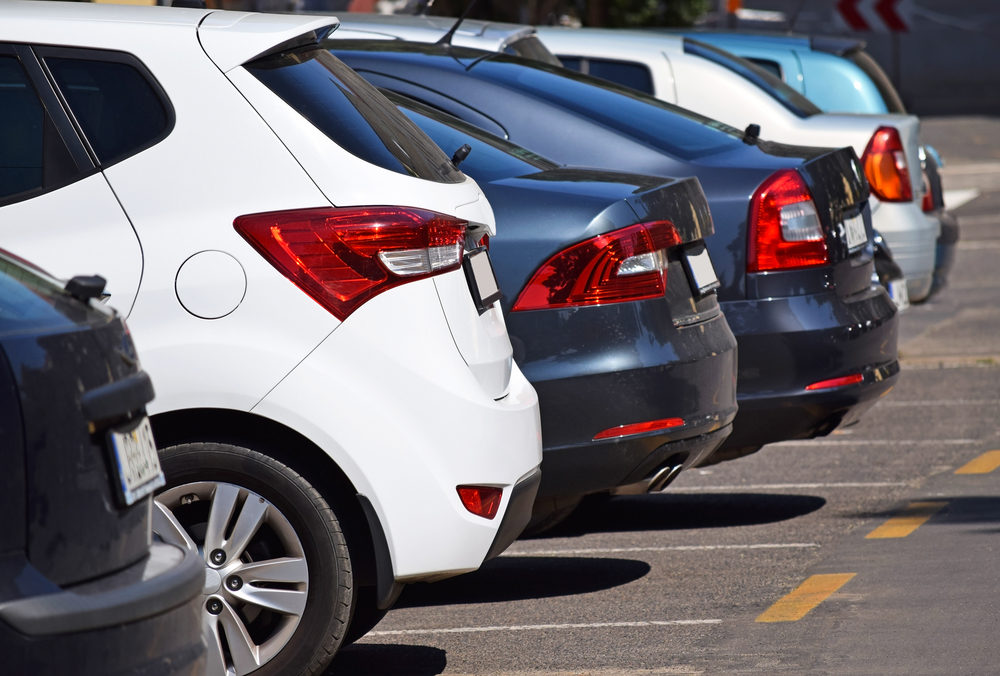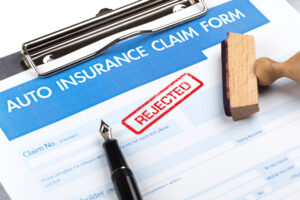
Parking lot accidents are common occurrences that often result in property damage, injuries, and confusion regarding liability. When a car accident occurs in a parking lot, determining fault can be more complicated than traditional accidents on public roads. Unlike regular traffic, parking lots are filled with various obstacles and changing traffic patterns, including pedestrians, parked cars, and moving vehicles. Determining who is at fault in a parking lot accident depends on the circumstances of the incident, including the specific rules of the parking lot, the actions of the involved parties, and state traffic laws.
The explores the factors that determine fault in parking lot accidents and what victims need to know when pursuing a claim. If you have been injured, call Shapiro, Washburn & Sharp to meet with a Norfolk car accident lawyer.
Understanding Parking Lot Traffic Rules
How do parking lot traffic rules differ from public road rules? Unlike roads and highways that have clear lanes, signals, and signage, parking lots often lack uniformity in layout, markings, and traffic flow. This makes determining fault more complicated. In most parking lots, vehicles are expected to follow one-way patterns, stop at stop signs or pedestrian crossings, and yield to pedestrians. However, not all drivers adhere to these rules, leading to accidents.
Some key factors to consider when determining fault in parking lot accidents include:
- Direction of travel: Many parking lots have designated one-way aisles, and driving in the opposite direction can lead to accidents.
- Yielding to pedestrians: In many jurisdictions, pedestrians in parking lots have the right of way. Failure to yield to a pedestrian crossing the lot can result in liability for the driver.
- Stop signs and markings: Some parking lots have stop signs or other markings to direct traffic. Failing to stop or yield when required can cause accidents, with the driver ignoring the signs potentially at fault.
- Clear visibility and signaling: Parking lots may have blind spots or tight turns. Drivers who fail to signal or check their surroundings before turning or backing out can be at fault in collisions.
Determining Fault in Specific Parking Lot Scenarios
How do different parking lot scenarios affect fault determination? Several common types of parking lot accidents can occur, each with its own set of rules for assigning fault. Below are some of the most frequent scenarios and the factors that influence fault determination.
Backing Out of a Parking Spot
One of the most common accidents in parking lots occurs when drivers are backing out of parking spaces. Who is at fault in backing-out accidents? In many cases, the driver backing out of the parking spot is presumed to be at fault. Drivers are required to yield to other vehicles and pedestrians when backing out, and they must ensure that their path is clear before moving.
However, the other party may also share some fault in certain situations:
- If a vehicle or pedestrian was improperly positioned, such as parked too close to the lane or crossing a pedestrian walkway illegally, the other party may share liability.
- In some cases, surveillance footage or witness testimony may reveal that the driver of the moving vehicle failed to notice a nearby vehicle or pedestrian who was in their path.
In general, the driver backing out is expected to take extra care to avoid accidents, making them primarily liable in most situations.
Two Cars Colliding While Moving Through an Aisle
In parking lot accidents where two moving vehicles collide while driving through the aisles, who is responsible for the accident? The rules for determining fault in these types of accidents are generally based on the same principles as accidents on public roads. However, parking lots often lack the same clear lane markings and traffic signals, which can create ambiguity.
Several factors to consider when determining fault in aisle accidents include:
- Right of way: If one driver was turning into a parking aisle and the other driver was already traveling through the aisle, the vehicle already in the aisle may have the right of way. The driver attempting to enter the aisle would generally be at fault if they failed to yield.
- Speeding: Parking lot accidents can also be caused by drivers speeding or failing to slow down in congested areas. If one driver was driving too fast for the conditions, they may be deemed negligent and at fault for the accident.
- Inattention or distractions: Just like on public roads, distracted driving can lead to accidents in parking lots. A driver who was texting, talking on the phone, or otherwise distracted while driving through the aisle may be liable for the accident.
In these situations, fault is typically determined by who had the right of way and whether either party was driving recklessly or negligently.
Pedestrian Accidents in Parking Lots
Pedestrian accidents are particularly concerning in parking lots, as they involve vulnerable individuals who are often not protected by the steel frame of a car. Who is at fault when a pedestrian is struck in a parking lot? In most cases, drivers are responsible for yielding to pedestrians in marked crosswalks or in areas where pedestrians are known to be present. Drivers who fail to yield to pedestrians, drive too fast, or ignore stop signs can be found at fault.
However, pedestrians also have a duty to exercise caution in parking lots:
- Jaywalking or crossing outside of crosswalks: If a pedestrian is crossing a parking lot outside of designated walkways, the driver may not be at fault, but they are still expected to be vigilant and avoid collisions whenever possible.
- Impaired or distracted pedestrians: If a pedestrian is intoxicated or distracted, making it difficult for the driver to avoid an accident, it may reduce the driver’s liability.
In pedestrian accidents, fault is typically assigned to the driver unless the pedestrian was behaving recklessly or outside of designated pedestrian areas.
Fender Benders and Property Damage
In parking lots, fender benders and minor collisions are common, especially in tight spaces. Who is responsible when two parked cars get damaged? In these cases, fault often depends on whether either driver acted negligently while parking or maneuvering. For instance:
- Poorly parked vehicles: If a vehicle is parked too close to another car or takes up multiple spaces, causing an accident when another driver attempts to park, the poorly parked driver could be found at fault.
- Opening doors into traffic: Another common type of accident occurs when a driver or passenger opens their car door into the path of another vehicle, causing damage. In such cases, the person who opened the door is typically at fault.
In these types of accidents, the vehicle causing the damage or obstruction is usually held liable for repairs.
Call Our Office for Legal Assistance
The best way to determine who is liable following a chain-reaction car crash is to partner with an experienced Norfolk car accident attorney who can do the investigation and analysis needed to determine which driver’s insurance company to contact. Contact our office today to schedule a free and confidential case evaluation and find out what legal recourse you may have.
Our firm is dedicated to helping our clients get the financial compensation they deserve for the losses their injuries have caused. We have a proven track record of success, having secured more than $100 million in settlements and verdicts.
For your convenience, we have offices in Virginia Beach, Norfolk, Hampton, Portsmouth, Suffolk, and Kitty Hawk, North Carolina.

For over twenty years, Mr. Sharp's law practice has focused on serious personal injury claims, including traumatic brain injury and spinal cord injury claims. He also handles nursing home neglect cases and medical malpractice claims. Mr. Sharp has counseled numerous clients about the complexities concerning litigation of both pediatric and adult brain injury. Mr. Sharp has been awarded the AV Preeminent ranking by Martindale, the highly respected and widely utilized directory of lawyers throughout the world. AV Preeminent status is awarded only to those lawyers who achieve the highest level of success within the legal field and is a testament to the fact that a lawyer's peers and Judges rank him at the highest level of professional excellence. He has also been recognized as a "Best Lawyer" by U.S. News for personal injury, an accolade awarded to only a small fraction of lawyers. Mr. Sharp has also been recognized by Super Lawyers as one of the top personal injury lawyers in Virginia. This recognition is awarded only to those lawyers who have achieved the highest level of success and have been recognized by their peers as demonstrating the highest level of professional excellence.










Comments for this article are closed.